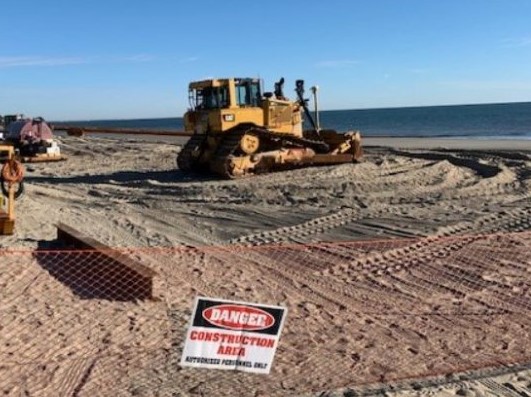The Main Principles Of Shore Protect Team
Table of ContentsWhat Does Shore Protect Team Do?Little Known Facts About Shore Protect Team.The Ultimate Guide To Shore Protect TeamThe Ultimate Guide To Shore Protect TeamThe Buzz on Shore Protect TeamSome Ideas on Shore Protect Team You Need To KnowSome Known Factual Statements About Shore Protect Team
Reduction in property value: As the area tourism is affected by erosion, so then is the economy. Customers are less most likely to look for a beach house that could be ruined anytime by the upcoming flooding and disintegration emergency situation. In turn, property value can go down tremendously and impact the entire region.Whether a beach is simply small and congested or has to shut totally for the security of the ecological community and nearby homes, this considerably impacts tourism. Subsequently, neighborhood economic climates are affected (https://infogram.com/shore-protect-team-1h9j6q7d873pv4g). Risk of injury: The enhanced danger of flooding and structural failings creates an increased danger of injury to close-by visitors and neighborhood participants

is home to greater than 84,240 miles of shoreline with 41% of it subjected to the open sea. Coastal engineers supervise of safeguarding the coastline against modifications by decreasing the harmful effects of both natural and manufactured incidents. Shoreline stabilization is directly pertaining to their work. Waterfront resorts: Since coastline erosion impacts tourist, it influences the success of waterfront hotels.
What Does Shore Protect Team Mean?
Coastal industrial organizations: No visitors indicates no business. Coastal state parks: State parks that exist along coasts are at danger of damages.
Soft stabilization is a far better service for the atmosphere and more lasting overall. Hard stablizing uses manufactured structures as security to manage disintegration. Usually, these frameworks are set up at best angles or alongside stop sand activity and lessen the pressure of waves. A lot of types of difficult stabilization like seawalls and sheet metal are not excellent for shoreline stabilization.
Rumored Buzz on Shore Protect Team
There's also inadequate proof of their efficiency depending upon the kind of coastline and local conditions. Hard stabilization methods often tend to be harder to set up and do not match the natural aesthetic, protruding like an aching thumb and damaging local ecosystems in lots of scenarios. Coastline nutrients is the process of adding shed sand and debris back to coastlines after erosion has occurred.
TrapBags help in the procedure of beach nutrients by securing all-natural environments and enabling plants to expand. They're: Eco pleasant: You can utilize indigenous dirt both to surround and to load the TrapBags.

Examine This Report about Shore Protect Team
They can additionally be installed without any kind of heavy equipment. Inexpensive: TrapBags are perfect for both tiny and large locations of coastline.
Incorporated with a high building and construction price, this has led to increasing usage of other soft design coastal management choices such as coastline replenishment. Seawalls are built from different products, many typically reinforced concrete, stones, steel, or gabions. Other possible construction products include vinyl, timber, light weight aluminum, fiberglass composite, and naturally degradable sandbags constructed from hemp and coir. The suitable seawall style relies upon location-specific elements, including bordering disintegration procedures. There are 3 major types of seawalls: upright, rounded, tipped, and mounds (see table below). A record published by the United Nations Environment Programme (UNEP) suggests that the tidal wave of 26 December 2004 triggered much less damages in the locations where natural obstacles were existing, such as mangroves, reef or coastal plants.
Natural obstacles, such as reef and mangrove woodlands, avoid the spread of tsunamis and the circulation of coastal waters and reduced the flood and surge of water. A cost-benefit method is a reliable way to establish whether a seawall is appropriate and whether the benefits are worth the expense.
Shore Protect Team - Truths
A seawall is a fixed feature which can contrast with the dynamic nature of the coast and hamper the exchange of debris between land and sea. The table listed below sums up some favorable and negative effects of seawalls which can be used when comparing their effectiveness with other seaside management alternatives, such as coastline nutrients. [] Benefits and downsides of seawalls according to Short (1999) Advantages Disadvantages Long-term option in comparison to soft beach nourishment.

This can create beaches to dissipate, making them ineffective for beach goers. Usually, seawalls can be a successful method to manage coastal erosion, however just if they are created well and out of materials that can stand up to the force of continuous wave power.
The Best Strategy To Use For Shore Protect Team
The appropriate seawall design relies upon location-specific elements, consisting of bordering erosion processes. There are 3 major types of seawalls: vertical, bent, tipped, and piles (see table below). A record released by the United Nations Atmosphere Program (UNEP) suggests that the tidal wave of 26 December 2004 caused less damages in the areas where all-natural obstacles were existing, such as mangroves, reef or coastal greenery.
All-natural barriers, such as coral reefs and mangrove forests, protect against the spread of tsunamis and the flow of coastal waters and minimized the flood and rise of water. A cost-benefit approach is an effective way to establish whether a seawall is suitable and whether the benefits are worth the expense.
Some Known Facts About Shore Protect Team.
A seawall is a static feature which can contrast with the vibrant nature of the coastline and restrain the exchange of debris in between land and sea. Advantages and disadvantages of seawalls according to Short (1999) Benefits Negative aspects Long term option in comparison to soft coastline nutrients.

This can cause coastlines to dissipate, providing them ineffective for coastline goers. Typically, seawalls can be an effective way to manage seaside erosion, however just if they are constructed well and out of materials that can hold up against the pressure of ongoing wave power.